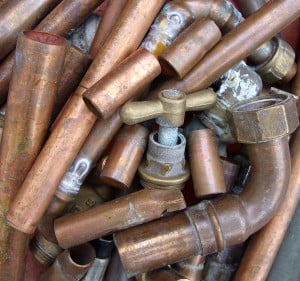Considering a basement lowering project for your home? Lowering your basement is not your everyday home improvement project, though with the real estate prices in Toronto and the scarcity of land, it is a great option for expanding your living space without losing precious yard space. If you want to find out more about basement lowering, read on.
Homeowners here in Toronto often ask about lowering their basement. It’s easy to see why many select this option for their home. In a process sometimes called underpinning, the basement floor is actually dug out a couple feet down. This makes the basement more accessible and usable and can add to the value of a home. Not only does it change a basement into better-added space, it also adds structural integrity to the home.
Preparing for the Basement Lowering Quote
As with any home improvement type project, there a few things that every homeowner should know and understand before they begin the basement lowering process. When it comes to your basement, of course, you are looking for a foundation or underpinning contractor who is a professional and experienced with the type of work you desire. You’ll want to find a company that has been in business for awhile, is specifically insured for this type of underpinning work and one that can provide you with plenty of references since this type of project can be disastrous if done wrong. When it comes to the structural integrity of your home, it’s always worth checking out a underpinning contractor thoroughly before hiring.
You may find companies who are willing to bid your job on the spot without drawings, without further knowledge or testing. That ballpark bid could end up increasing drastically after you hire as there are many variable to consider and it means they have not gone through the process properly in order to give an accurate quote, they assume they can just get the job and overbill you later after the project has started and is harder for you to back out.
A reputable underpinning company will need to see exactly what you expect them to do. Part of the process could include demolition and drilling test holes before beginning as well as working with an engineer. Often, when this part of the process is not done, the homeowner’s preference change and the company ends up with discrepancies in their work order that need to be resolved.
Hiring an Architect or Engineer
Part of the process for lowering your basement should include getting quotes from at least two professionals for drawings and determining which architect or engineer you plan to use before you even have a contractor come out. Doing this part of the process ahead of time shows the contractor that you are serious about the process and will educate you on how the entire process works. When a contractor knows you really do plan to have the work done, they don’t mind the 3 to 5 hours that are involved in coming up with a pricing estimate. If you skip this step and ask a contractor for a bid on a basement lowering project without doing your due diligence you may end up with a range of pricing that is arbitrary and on down the road it may have no connection with the work performed.
An experienced underpinning contractor will only work with reputable architects and engineers with experience in basement lowering and can recommend one if needed. Here at Nusite, we work with several very reputable engineering firms and architects that specialize in basement lowering.
Drawing/Plan Approval
The basement lowering drawings you received from your architect or engineer typically need to be certified and then sent for approval for a building permit., at least here in Toronto. The inspector may recommend changes that will need to be marked on your approved drawings. This is not an easy task so you want to make sure you have an experienced craftsman leading this project.
Understanding the Basement Lowering Quote
To understand your underpinning contractor and his pricing and process, it’s important to note that basement lowering is a very time-consuming, labor-intensive process. And a challenging project from an engineering standpoint. Your contractor will need to follow those drawings accurately and that takes skill and experience. Compare quotes between a couple different contractors and check to make sure the scope of work is the same on both of them.
There have been several well documented disasters in Toronto involving unqualified contractors and houses falling down due to improper shoring during the basement lowering process. If you hire an unqualified and under-insured contractor, you the homeowner will bear most of the responsibility and legal consequences if workers or civilians get injured due to negligent work.
Scheduling the Work
When you decide upon a plan and agree on a price with your underpinning contractor, the work can be scheduled. A contractor may be able to schedule quickly and be out in a few days or in may take weeks. As always when dealing with a contractor, being busy is a good thing. You don’t want to hire a contractor who isn’t busy. It’s a bit like going to a restaurant where no one else eats and expecting a wonderful meal.
Here in Toronto, the Spring and Summer are usually the busy times for basement lowering contractors but since the work is indoors, this work can be done during the winter and you may have a better time finding an available underpinning contractor for your project. Winter may also be a great time to head south to warmer climates while the work is being done on your home.
The Work Process
The unerpinning contractor will begin by measuring and marking everything out prior to beginning. They dig out the basement slab and typically lower the floor 1-3 feet. They will also shore up the underpinning or sidewall area to ensure structural stability. We then carry out our lowering process, either bench footing (creating a bench to support the dirt underneath the foundation wall) or we underpin (directly removing the soil underneath the foundation wall and replacing it with concrete).
Once that is accomplished they typically waterproof the interior of the basement foundation, put down gravel then pour a new floor. They also place a waterproofing membrane connected to a sump pump on the interior to help keep your basement dry. The amount of time it takes and the cost of the project can very base on the size of your basement. Some projects take a few days (mostly repairs) and some can extend into many weeks (average full job is 3-6 weeks). While it is difficult to provide a price without drawings and discussions with the homeowner, you can expect this type of specialty work to run between $20,000-$50,000.

Toronto Finished Basement After Underpinning
Project Completion
When the basement lowering project is completed, you should walk the job with the foreman or project manager. You’ll want to check for anything that seems unfinished or anything that doesn’t look right. You want to check that the city and the engineer passed all inspections throughout the project. Also check to make sure that your contractor and his crew cleaned up after they finished. You shouldn’t see debris left behind unless your contractor has let you know ahead of time that you are responsible for cleaning it up. In most cases, the contractor does the clean up and removal unless otherwise agreed upon.
Do I Really Want to Do This?
Basement underpinning is by no means, a small undertaking as you probably understand by now. There is research, time and money involved and may seem a little complex. Yes, it takes preparation, thoroughness and quite a bit of your hard earned money. If you find the right contractor, your project will go much smoother. They are the expert, let them do their job. Having underpinning done will also gives you more usable space that you can enjoy for years to come and adds value to your home. In today’s real estate marketing, adding that value (which does not increase your property tax) can go a long way to helping the home sell. Making the right decisions and following the process it takes to do the job correctly will be beneficial in the long run.
Nusite Contractors are basement lowering experts in Toronto and have successfully completed hundreds of underpinning projects in Toronto and the GTA and can provide references upon request. If you live in the Greater Toronto Area and have questions about lowering your basement, feel free to contact us here, we’re happy to answer any questions and explain how the whole basement lowering project works. We can also recommend experienced architects and engineers if you are interested in getting started.





 If you live in a metro area like we do here in Toronto, land is at a premium. When an expanding family is looking to increase the living space in their home, they usually either choose going up (adding another floor), or going below (increasing the height of their existing basement).
If you live in a metro area like we do here in Toronto, land is at a premium. When an expanding family is looking to increase the living space in their home, they usually either choose going up (adding another floor), or going below (increasing the height of their existing basement).





